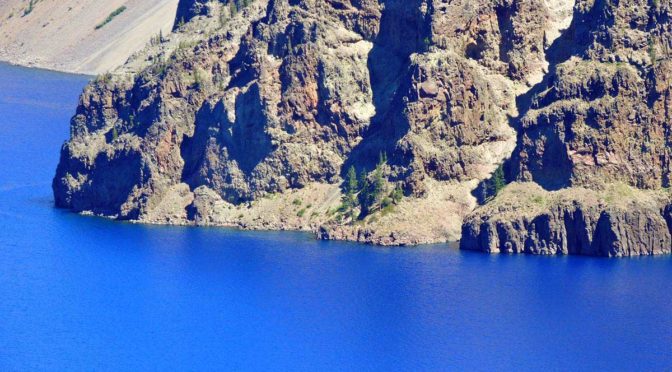The National Park System
A Dual Purpose: Preservation and Enjoyment
“…to promote and regulate the use of the… national parks… which purpose is to conserve the scenery and the natural and historic objects and the wild life therein and to provide for the enjoyment of the same in such manner and by such means as will leave them unimpaired for the enjoyment of future generations.”
– National Park Service Organic Act, 16 U.S.C.1.
Establishment of the National Park System
On March 1, 1872, Congress established Yellowstone National Park in the Territories of Montana and Wyoming “as a public park or pleasuring ground for the benefit and enjoyment of the people” and placed it “under exclusive control of the Secretary of the Interior.” The founding of Yellowstone National Park began a worldwide national park movement. Today more than 100 nations contain some 1,200 national parks or equivalent preserves.
In the years following the establishment of Yellowstone, the United States authorized additional national parks and monuments, most of them carved from the federal lands of the West. These, also, were administered by the Department of the Interior, while other monuments and natural and historical areas were administered as separate units by the War Department and the Forest Service of the Department of Agriculture. No single agency provided unified management of the varied federal parklands.
An Executive Order in 1933 transferred 63 national monuments and military sites from the Forest Service and the War Department to the National Park Service. This action was a major step in the development of today’s truly national system of parks—a system that includes areas of historical as well as scenic and scientific importance.
On August 25, 1916, President Woodrow Wilson signed the act creating the National Park Service, a new federal bureau in the Department of the Interior responsible for protecting the 40 national parks and monuments then in existence and those yet to be established. This “Organic Act” states that “the Service thus established shall promote and regulate the use of Federal areas known as national parks, monuments and reservations… by such means and measures as conform to the fundamental purpose of the said parks, monuments and reservations, which purpose is to conserve the scenery and the natural and historic objects and the wild life therein and to provide for the enjoyment of the same in such manner and by such means as will leave them unimpaired for the enjoyment of future generations.”
The National Park Service still strives to meet those original goals, while filling many other roles as well: guardian of our diverse cultural and recreational resources; environmental advocate; world leader in the parks and preservation community; and pioneer in the drive to protect America’s open space.
Today, the National Park System of the United States comprises 378 areas covering more than 83 million acres in 49 States, the District of Columbia, American Samoa, Guam, Puerto Rico, Saipan, and the Virgin Islands. These areas are of such national significance as to justify special recognition and protection in accordance with various acts of Congress.
Additions to the National Park System are now generally made through acts of Congress, and national parks can be created only through such acts. But the President has authority, under the Antiquities Act of 1906, to proclaim national monuments on lands already under federal jurisdiction. The Secretary of the Interior is usually asked by Congress for recommendations on proposed additions to the System. The Secretary is counseled by the National Park System Advisory Board, composed of private citizens, which advises on possible additions to the System and policies for its management.
America’s First National Parks
| Park | Estab. |
State | Size (acres)* |
|
|
1. |
Yellowstone | Wyoming | 2,219,791 | |
|
2. |
Mackinack Island | Michigan | ||
| Given back to the state of Michigan in 1895. | ||||
|
3. |
Sequoia | California | 402,482 | |
|
4. |
Yosemite | California | 761,236 | |
|
5. |
General Grant | California | 461,901 | |
| Originally a small park, General Grant was incorporated into Kings Canyon in 1940. | ||||
|
6. |
Mount Rainier | Washington | 235,613 | |
|
7. |
Crater Lake | Oregon | 183,224 | |
|
8. |
Wind Cave | South Dakota | 28,295 | |
|
9. |
Sully’s Hill | North Dakota | ||
| Converted to a game preserve in 1931. | ||||
|
10. |
Mesa Verde | Colorado | 52,122 | |
|
11. |
Platt | Oklahoma | 9,889 | |
| Now part of Chickasaw National Recreation Area. | ||||
|
12. |
Glacier | Montana | 1,013,572 | |
|
13. |
Rocky Mountain | Colorado | 265,727 | |
|
14. |
Hawaii Volcanoes | Hawaii | 209,695 | |
|
15. |
Lassen Volcanic | California | 106,372 | |
* All acreages listed are the parks’ current size. Most were much smaller when they were originally established.
Crater Lake:
The 5th, 6th, or 7th National Park?
It depends on how you look at it. If you only consider existing national parks, Crater Lake could be numbered as high as the fifth national park. We became #5 with the decommissioning of Mackinac Island and the absorption of General Grant into the current Kings Canyon National Park. If you allow General Grant to remain, we are #6 on the list. If you stick to the original list, regardless of present status, Crater Lake was the seventh national park to be established. Whatever our rank, we hope you will consider us #1 in your hearts.
Other pages in this section
*** previous title *** --- *** next title ***


